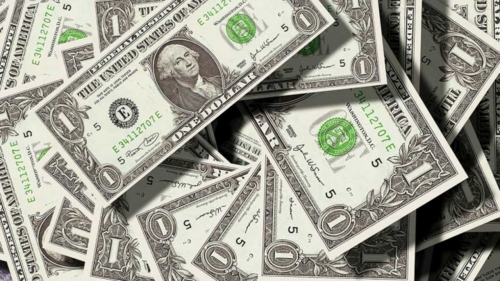

Despite the stigma and misconceptions that still persist around mental health disorders and treatment, mental health problems are among some of the most common health issues for Americans. About one in five Americans (over 47 million people) suffer from some form of mental illness each year. Mental illnesses range from mild to severe and encompass everything from anxiety and depression to bipolar disorder and schizophrenia. Approximately 40 million (one in six) Americans take some form of prescription medication for a mental health issue.
Like virtually every class of prescription drug sold in the United States, the cost of mental health drugs is a main concern for many of the people who rely on them for their productivity, health, and overall wellbeing. Barriers to healthcare and insurance, as well as the high cost of prescription drugs in the United States can make it difficult for affected Americans to get the help and medications they need.
Unlike other common health conditions like high blood pressure or asthma, mental health problems aren't necessarily contained to an individual — they can have ripple effects through entire families and communities, making access to adequate treatment and affordable mediation even more urgent.
Unfortunately, mental health drugs are one of the many types of medications millions of Americans are choosing to forego because often they simply can't afford them.
Mental health issues present in varying degrees of severity and affect everyone differently. Some people need more treatment and medication than others to manage their condition and maintain a stable and healthy quality of life. That said, taking prescription medication is often necessary with certain mental illnesses, regardless of how healthy the person might be otherwise.
While these prescriptions provide enhanced quality of life and crucial support, rationing prescription medications has become a common (and dangerous) practice among Americans of all age groups and backgrounds. Unable to pay for their medications as prescribed, some people delay filling their prescriptions to save money, or take less than the recommended dosage to make the prescription last longer. Not only does this make treatment less effective, it can have dangerous and even fatal consequences.
To make matters worse, millions of Americans take more than one prescription medication at any given time, opening up a plethora of possible problems. It's estimated that over 40% of Americans take at least one prescription medication, and 17% are prescribed at least three different drugs at any given time. The constant fear and worry over how to pay for healthcare expenses and prescription drugs would be enough to drive anyone into a state of anxiety, stress, and depression without even considering the stress caused by having a disease that requires the medication in the first place.
Unfortunately, the pharmaceutical industry has created a system that has prioritized profits over the health and well-being of the very people they are supposed to serve. The system has allowed the pharmaceutical industry to have a significant amount of latitude, exploiting American consumers to the point of financial ruin and even death in cases where lifesaving medications have been priced out of the average consumer's reach. Perhaps even more disturbing, having health insurance and prescription drug coverage doesn't always mean your medications are less expensive.
Some of the most common mental health disorders and illnesses for which people take prescription drugs include:
Some disorders like schizophrenia and bipolar disorder require medication to keep patients stable and to help manage their symptoms, just like physical illnesses such as heart disease or diabetes. With other illnesses like depression and anxiety, medication is also often used to help treat patients with severe symptoms. Medication is often paired with talk therapy or is prescribed by a general physician who checks in with the patient every few months to assess anxiety and depression levels, and adjust the dosage as necessary.
Regardless, there's a lot of room for interpretation when it comes to whether someone should take prescription medication (and which drug is best) for mood disorders, phobias, and anxiety. Furthermore, practitioners and therapists have differing opinions of dosage, even within their own specialties.
This has opened the door to what many consider to be abusive practices by the pharmaceutical industry by way of over marketing and pushing doctors to over prescribe certain drugs in order to boost their profits. The practice has been well-documented, and in the case of the opioid epidemic, has resulted in massive settlements in favor of the American people and the local governments that have footed the bill for the death toll.
For younger Americans (perhaps born in or after the 1990s), pharmaceutical drug company marketing and advertising are just a normal way of life. By extension, so is getting a prescription for even the most minor of "conditions" or health problems. In fact, issues that were once considered wellness issues to be addressed and monitored through lifestyle adjustments have now become verifiable medical problems thanks to pharmaceutical industry branding campaigns ("dry eye syndrome" being one example).
But for older Americans, there was once a time when the decision to prescribe medication belonged almost exclusively to doctors and health care professionals — experts who based their decisions on medical precedent, accepted practices, and the individual patient's needs. Today, American doctors and consumers are under constant pressure not just to utilize prescriptions, but to figure out how to pay for them.
Pharmaceutical companies launch commercials and advertising campaigns that target consumers and encourage them to "ask their doctor" if a certain medication is right for them. But on a less obvious level, they also employ armies of brand ambassadors and pharmaceutical sales representatives to target doctors and incentivize them to prescribe the drugs on their company's product offering.
And if that weren't enough, insurance companies often broker deals with pharmaceutical companies to put certain drugs on their "preferred" coverage lists — even medications that perform the same function and retail at similar prices. For example, Brand A might be "preferred" over Brand B, but Brand B is actually a few dollars cheaper than Brand A. The difference is that Brand A brokered a deal that Brand B could not close.
If the patient feels that Brand B works better for them, they'll have to jump through multiple hoops in order to obtain a special authorization for the prescription — and even then, it's not always possible.
Along with the ethical implications of price gouging consumers, these practices have helped to foster a chaotic and dangerous economy where the cost of essential drugs are grossly inflated. Additionally, it has created a market that is saturated with prescription drugs that some people might not necessarily need. This ultimately makes it more difficult for the people who actually do need these medications to be able to afford them.
Despite the fact that so many Americans suffer from some type and degree of mental illness, they aren't necessarily comfortable seeking (or willing to seek) treatment. Statistics show that mental health disorders like anxiety have practically doubled in young people over the past decades, but children and adolescents often aren't getting the help they need — something that is crucial at such an impressionable age. There are many factors that affect how and why people get treatment for mental health issues, but experts believe that the cost of prescription drugs in the United States is one of the primary barriers to access.
The American Psychiatric Association (APA) found that anxiety is also on the rise in American adults. A recent poll found that up to 40% of the respondents admitted to feeling higher levels of anxiety than they had just the year before.
Anxiety is among the leading mental health disorders among Americans. Over 40 million (roughly 18% of the population) suffer from an anxiety disorder. While anxiety is treatable in many cases (with talk therapy and medication), nearly 37% of those diagnosed do not seek help.
Whether it's a popular mental health drug like Abilify or a statin like Lipitor to manage high cholesterol and the risk of heart disease (a leading cause of death for both men and women in the U.S.), there's a long list of structural problems that make prescription drugs way more expensive in the United States than anywhere else in the world.
Regulation is typically frowned upon when it comes to corporations and industries in the United States. In countries like Canada and member states of the European Union, regulations are considered a commonsense practice that ensure businesses play by the rules and engage in fair market practices. The vast majority of the time, these regulations are said to be in place to protect consumers and to allow greater access to important resources.
For example, the Canadian government regulates how much pharmaceutical companies can charge for prescription drugs — which helps control prices. In the United States, even necessary regulations are often seen as a burdensome and a politically motivated attack on a free market.
As we've seen in the U.S. — especially over the last decade — a lack of regulation on pharmaceutical companies is likely to inflate prices.
The fact that healthcare and prescription drugs are treated as just another commodity and high profit industry is arguably one of the biggest concerns that consumers seem to have in the United States health insurance system.
As too many Americans have learned over the last few years, big pharma profits take precedence over the health and safety of American lives. American citizens have experienced significant strife at the hands of an unregulated healthcare industry, from losing their life savings to going into debt and even dying from treatable conditions.
The patent system in the United States is structured in a way that gives pharmaceutical companies an advantage. Essentially, the law allows them to create a temporary monopoly. Patents on brand name drugs typically last for 20 years, at which point generic drugs are able to go into production, but even then, it takes years for generics to be formulated, tested, FDA-approved, and released to the public.
In the meantime, the pharmaceutical developer is able to reap all the benefits of being the only company able to profit from the drug, all while developing drugs that are in direct competition with their existing drugs to launch when the existing drug goes off patent. Furthermore, they're able to manipulate the market by keeping less expensive generic drugs off the market for years or even decades, and extending the life of patents for expensive brand name drugs by making minor changes to the formulation or method of production.
And to top it all off, pharmaceutical companies often artificially inflate prices prior to a generic drug entering the market. This often happens in the months leading up to a new generic drug release.
.jpg)
